Forests control soil moisture and air humidity
In September of last year, the Forestry and Game Management Research Institute of Forest organized a professional conference entitled “Forest hydrology – science and practice 2022” aimed at transferring the knowledge of science and research into forestry practice. In the centre of interest of participating experts, it was the topic of large-scale clearings after the bark beetle disaster and their effect on the water regime. Big attention was also devoted to the importance of forests in water circulation and climate formation on a regional and supra-regional scale and to the effect of forests on the quality and quantity of water in extreme and normal hydrometeorological situations. We have selected some interesting information presented at the conference, for you.
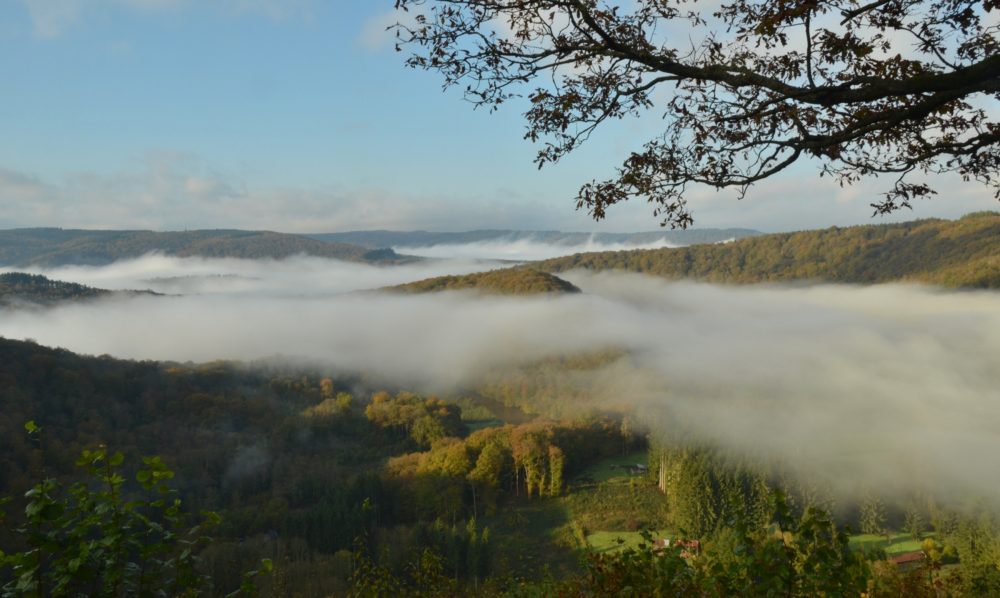 Forests play an important role in the balance of energy and water and affect the climate near the ground. On sunny days, thermal images of a mature forest stand show higher surface temperatures in crowns contrasting with a much cooler environment under the canopy. Generally, the cooling effect of plants is evident; observed surface temperatures of various materials are much higher.
Forests play an important role in the balance of energy and water and affect the climate near the ground. On sunny days, thermal images of a mature forest stand show higher surface temperatures in crowns contrasting with a much cooler environment under the canopy. Generally, the cooling effect of plants is evident; observed surface temperatures of various materials are much higher.
Due a low albedo, forests can absorb relatively higher amount of solar energy. Anyway, the cooling effect of trees is evidenced by measured transpiration flux – water vapour flow into the atmosphere. Therefore, surface temperatures of the canopy are controlled particularly by that vapour exchange.
The cooling performance of individual trees is evidenced by the measured values of their transpiration, i.e. by release of water through the surface. Surface temperatures are determined by water vapour, not by albedo (the ratio of reflected solar radiation to the amount of incident radiation). Thanks to evaporation of water, the surface temperatures of mature forests and wetlands, which transform huge amounts of solar energy into water vapour, are significantly lower in sunny weather than the temperatures of harvested fields and drained areas.
In the experimental area near Dačice, the cooling effect of the forest canopy was detected by remote sensing techniques. After the impact of bark beetle there was detected rising surface temperatures in the dry forest canopy.
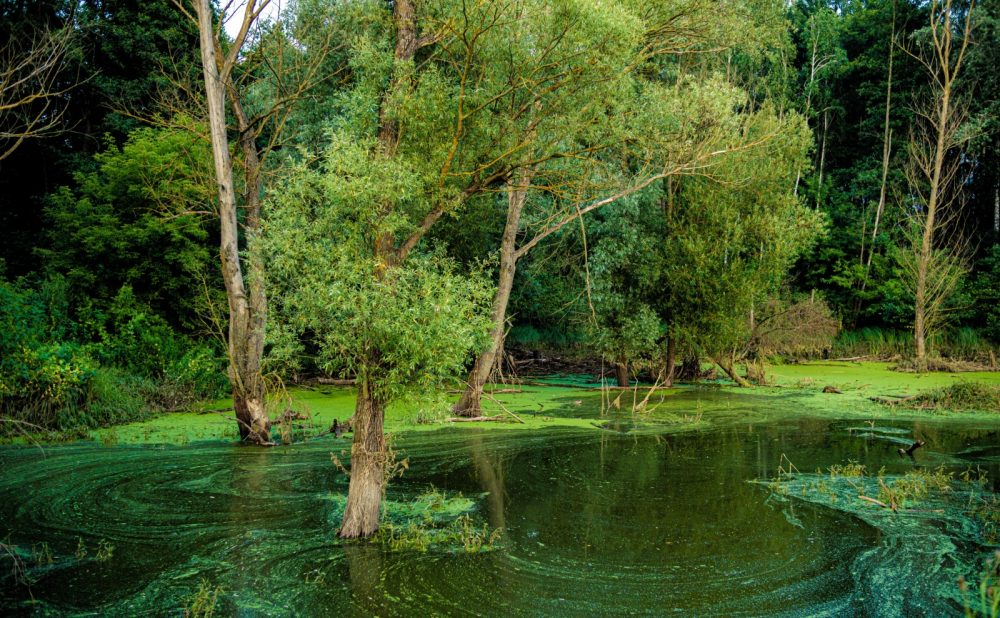 Withering of forest stands and subsequent drainage are associated with a shift in the distribution of solar energy from evaporation to the sensible heat associated with increasing surface temperatures. Overheated surfaces heat up the air, which rises rapidly upwards. This upward flow of heated air absorbs moisture from the surroundings and accelerates evaporation from adjacent vegetation and water locations.
Withering of forest stands and subsequent drainage are associated with a shift in the distribution of solar energy from evaporation to the sensible heat associated with increasing surface temperatures. Overheated surfaces heat up the air, which rises rapidly upwards. This upward flow of heated air absorbs moisture from the surroundings and accelerates evaporation from adjacent vegetation and water locations.
The warmed air rises too high to form clouds and the water returns as local precipitation. This leads to the gradual drying out of the landscape. Evapotranspiration from forest stands lowers the surface temperature of the forest canopy. Due to the high content of water vapour in the air above the forest, when it condenses and the air pressure drops, moist air from the surroundings is further sucked in. It is proven that the deeper into the interior of the continents, the greater the proportion of precipitation water comes from evaporation from forests.
The assessment of the potential change in the species composition of forests to the hydrological regime of forest catchments takes also attention. The different size of the biomass and the area of the assimilation apparatus in deciduous and coniferous trees, together with leaf fall in winter, significantly affects the total interception, evapotranspiration and runoff from the catchment. Coniferous stands show a higher interception (water retention on the plant surface) in both summer and winter, and higher transpiration in the off-vegetation period. When the proportion of deciduous trees increases, the total interception and evapotranspiration of stands decreases in both winter and summer, which can lead to an increase in runoff from the catchment.
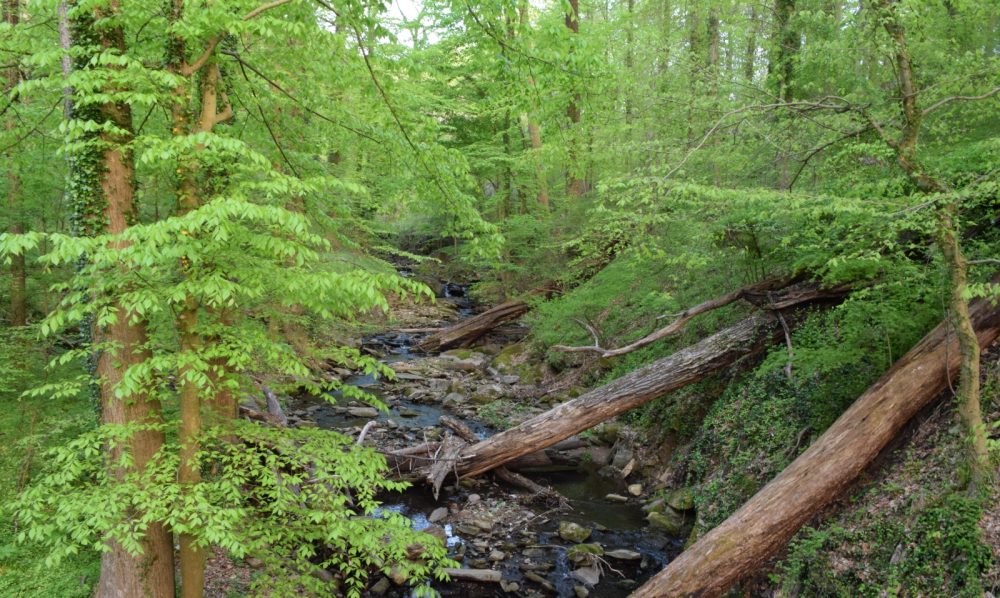 ♣ ♣ ♣
♣ ♣ ♣
Beech and spruce stands react differently to the dry period. In the case of beech, transpiration, it was almost double higher, that of the spruce stand in the wet year, and it decreased by more than half in the dry season. In the spruce stand, transpiration in the dry season of 2021 was only in a quarter scale. Spruce trees thus showed a significantly higher efficiency of water use for their growth.
Despite the current problems with non-native spruce stands at lower altitudes, research indicates a high ability of spruce to cope with periods of drought and to maintain the ability to grow even with reduced levels of plant water management.
Rising air temperatures result in higher evaporation. They are also the cause of the shorter duration of the snow cover, which means higher absorption of light energy from the sun (by decreasing albedo) and a further increase in temperatures. As temperatures rise and the duration of the snow cover shortens, the vegetation period also increases and thus evapotranspiration increases. As a result, there is a decrease in the volume of water from the non-vegetation period available for water runoff and accumulation in surface and subsurface waters.
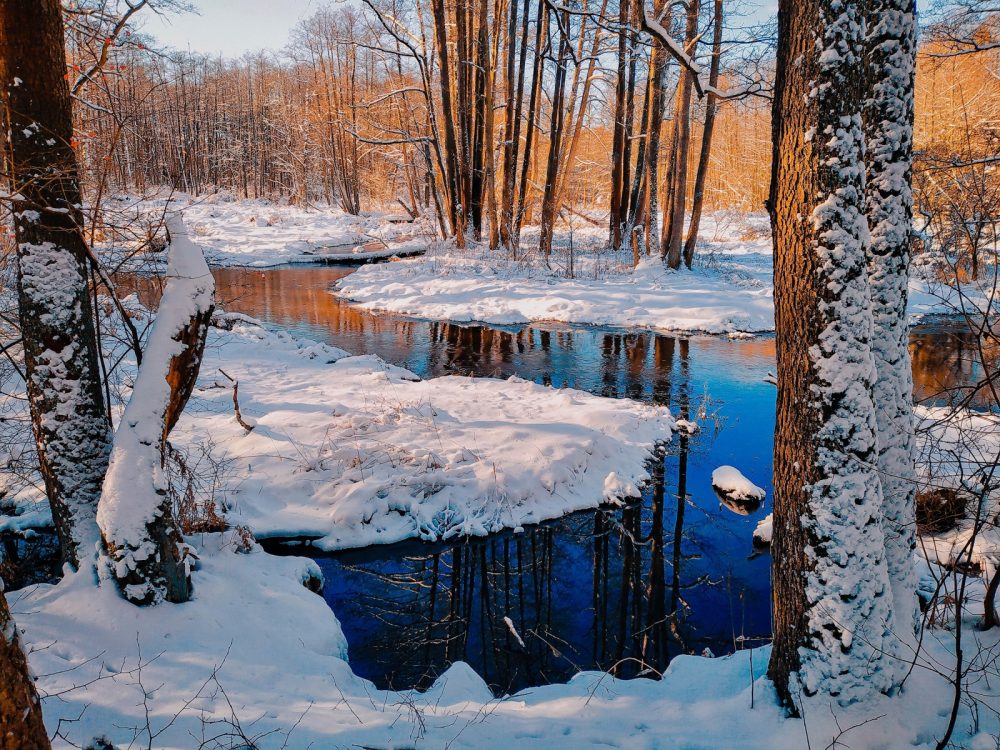 ♣ ♣ ♣
♣ ♣ ♣
When evaluating the hydric-water management functions of the forest, the emphasis is mainly on the functional complex tree vegetation – soil (and climate). However, the hydrological importance of water macrostructures such as forest springs, natural streams or forest wetlands, is often neglected. This is reflected in the overall approach to forest management and the use of technologies that do not take these water features into account.
The result is a significant proportion of destroyed springs and straightened streams, which are mostly led into deep ditches as part of systematic surface drainage, and the disappearance of forest wetlands in water-affected sites.
This situation is recorded throughout the Czech Republic, including protected mountain and foothill spring areas. At the same time, the poor condition of these water elements decisively affects both the hydric functions of forests and the overall water regime of the landscape.
Corrective measures still favour the construction of pools or small water reservoirs, while the restoration of functional water structures in the forest landscape, i.e. springs and natural drains, is rather a marginal matter. Even in economically used forests, however, it is possible to carry out truly functional hydrological revitalizations, it means such revitalizations, which will help to return at least part of the springs and watercourses to a close to natural and functioning state.
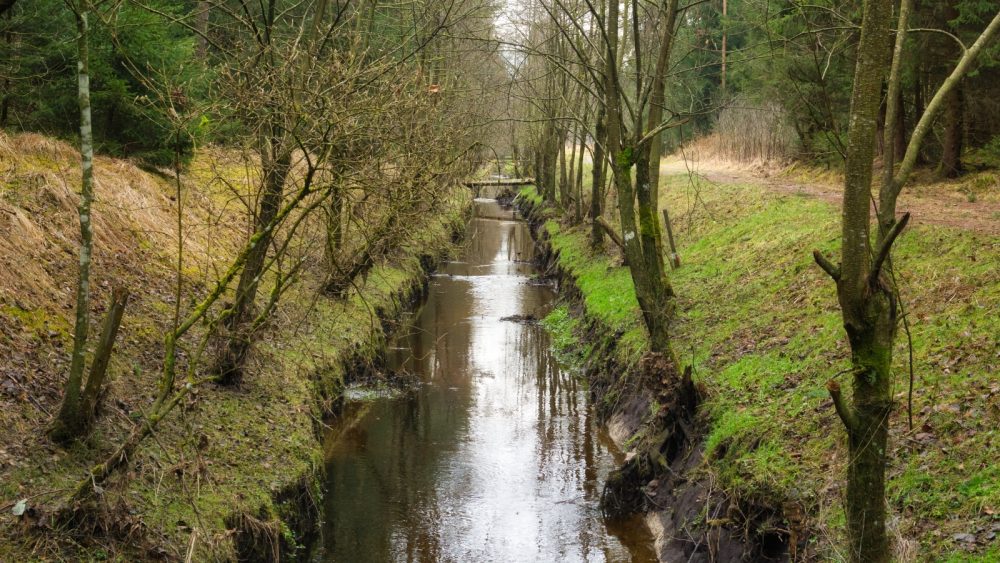 ♣ ♣ ♣
♣ ♣ ♣
The impact of climate change and related deforestation on shallow groundwater sources used to supply the population with drinking water can be documented using the example of the Heraltice water treatment plant. The water source located in the forest complex is made up of shallow drainage ditches, which serves to supply the population with drinking water. In the years 2019–2021, there was, as a result of the bark beetle calamity, a massive loss of forest cover on the entire territory of the catchment spring, which had a significant impact on the amount of catchment water. The loss of the protective function of the forest also caused more frequent fluctuations in the quality of raw water.
Detailed information about the conference and individual presentations of participating experts can be found here.
Prepared by Ing. Jan Řezáč, FGMRI, e-mail: rezac@vulhm.cz
Illustration photo: Water in the landscape, water in the forest, free to use
